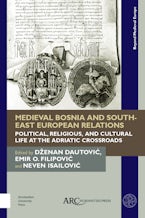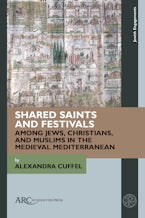- Home
- Beyond Medieval Europe
- history
- religion
- Medieval Bosnia and South-East European Relations
Medieval Bosnia and South-East European Relations
Political, Religious, and Cultural Life at the Adriatic Crossroads
Edited by Dženan Dautovic, Emir O. Filipovic and Neven Isailović
Series: Beyond Medieval Europe
168 Pages, Trim size: 156 x 234 mm
- Hardcover
- 9781641890229
- Published: October 2019
Dženan Dautović is a doctoral researcher at the University of Sarajevo specializing in the history and historiography of medieval Bosnia and the Papacy.
Emir O. Filipović is a Lecturer in medieval Bosnian history at the University of Sarajevo specializing in heraldry, chivalry, and the Ottoman conquest of the Balkans.
Neven Isailović (Faculty of Philosophy, Belgrade) specializes in the political and social history of the medieval Balkans.
This stimulating volume of seven essays focuses principally on Bosnia and its hinterland in the high and later medieval period. In a short introduction, the editors state their desire to illuminate a region “overlooked by western historiography” and to help integrate the history of Bosnia into “dominant general narratives of the Middle Ages”. [...] The essays are edited and formatted to a high standard and written in accessible and clear English. The individual subheadings for each contribution and a thorough general index of seven pages mean non-specialists will find the volume easy to navigate, although the inclusion of a map to make sense of the panoply of settlements, rivers, and regions mentioned throughout would have been helpful. Scholars of various disciplines will find much of interest, given the broad thematic and chronological range of the contributions. In short, the volume fills important gaps in historical research, serves a genuine need for high-quality and accessible Anglophone scholarship on lesser-studied areas of Europe, and sets a fine example for any future endeavors in the field to follow. ~Mark Whelan, Speculum 96, no. 1 (2021): 201-2
[U]n ouvrage qui, par les thématiques abordées, reconnecte cet espace au reste de l’Europe médiévale de deux manières. Premièrement, à travers l’analyse des relations internationales, en abordant la question des frontières, des conflits religieux, et des évolutions politiques, ce qui permet de rappeler que cet espace était intimement intégré dans une histoire médiévale européenne ("an integral component of the rich and varied European medieval experience") et connecté à ses puissants voisins et acteurs majeurs de la fin du Moyen Âge dans les Balkans, à savoir la République de Venise, le royaume de Hongrie et l’Empire ottoman. Deuxièmement, cet ouvrage livre au monde académique des études récentes et pertinentes sur une région pour laquelle il existe encore trop peu de travaux dans des langues accessibles au plus grand nombre. En publiant ces articles en anglais, les auteurs de cet ouvrage permettent la divulgation de travaux et présentent un champ d’étude innovant et fertile.
~Ingrid Houssaye Michienzi, Bulletin critique des Annales islamologiques 35 (2021): 120-21











